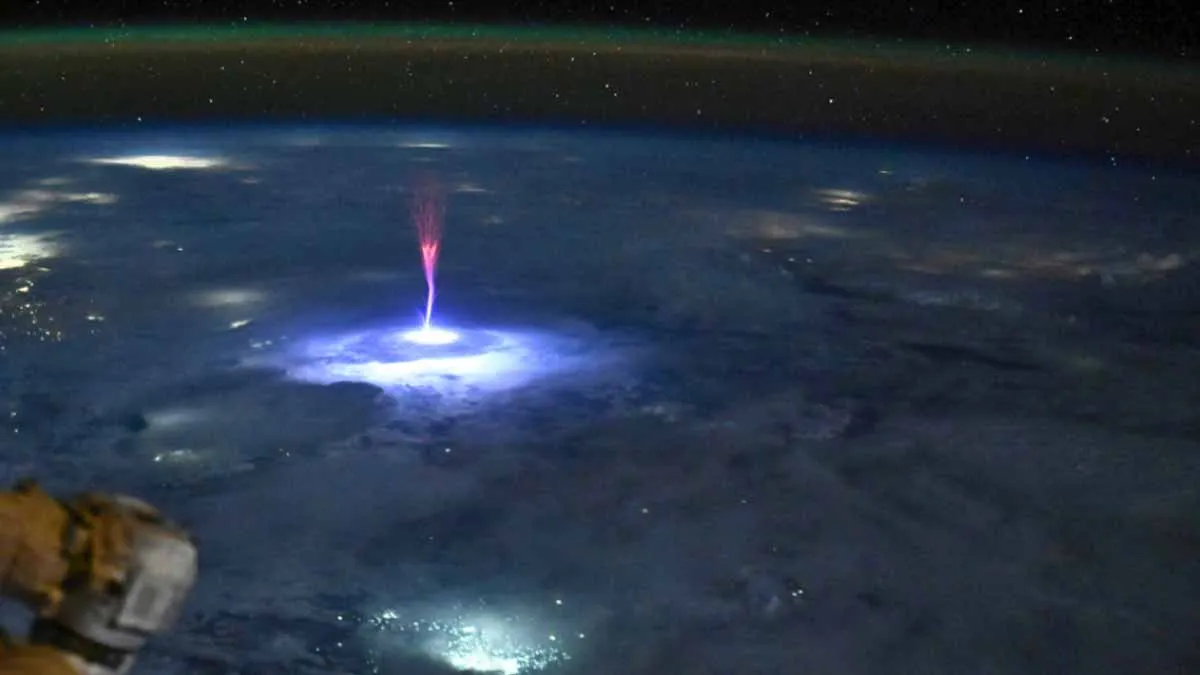Space Reveals Ghostly Light Shows Dancing Above Thunderstorms

Astronauts aboard the International Space Station (ISS) get a front-row seat to some of the most mind-blowing and elusive sights in our atmosphere. Up high above raging thunderstorms, these cosmic light shows do more than just dazzle—they push the boundaries of what we know about weather. Not only are they a treat for the eyes, but they also have pretty interesting repercussions for things like communication networks and climate studies.
Catching Flashy Light Shows
From their lofty perch on the ISS, astronauts are treated to unique electric displays known as transient luminous events. These light shows happen way up in the upper atmosphere—well above storm clouds—and can reach altitudes of up to 55 miles high. You can catch a glimpse of red sprites that look a bit like jellyfish and last just milliseconds. Then there are blue jets that shoot straight up toward the stratosphere, along with ephemeral violet halos and broad ultraviolet rings that flare up and quickly disappear. The National Aeronautics and Space Administration (NASA) has snapped a series of photos capturing these brief moments, offering valuable details on how long they last and how bright they are.
These events are more than a pretty display; they play an important part in our understanding of the atmosphere. For instance, ELVES—huge ultraviolet rings that can stretch over hundreds of miles—can change the electrical charge in the ionosphere. Such changes might mess with long-range radio communications that both civilians and military services count on. As these events light up stormy skies, they point to the need for better alert systems for pilots and other operators who might experience signal hiccups during bad weather.
Tech Breakthroughs With ASIM
Since 2018, the European Space Agency’s Atmosphere-Space Interactions Monitor (ASIM) has been parked on the ISS to keep an eye on these storm-related phenomena. Using high-speed cameras and photometers, ASIM catches even the tiniest flickers above the clouds, giving us a peek into how cloud tops set up lightning and how energy spreads during storms. ASIM even confirmed that discharges at the tops of storm clouds can pump energy into the ionosphere, helping to form those ELVES rings.
The ISS cupola offers a one-of-a-kind view for the astronauts. Experiments like Thor-Davis use high-speed cameras to film these storms in detail, which helps scientists compare real events with lab tests on plasma and discover surprising patterns. Thanks to these observations, researchers have even learned that blue jets can extend high into the stratosphere.
What It Means for Communication And Climate
These fleeting light shows do more than just create a cool visual—they also affect the atmospheric layers that carry radio signals. This matters a great deal for submarine communications and networks across the ocean. Airlines also benefit by spotting patterns that help them steer clear of rough zones during storms to keep passengers safe.
Engineers are hard at work developing smarter onboard systems designed to capture important data in spite of these disturbances. A better grasp of how charged layers in the atmosphere behave not only helps keep communication signals clear but also shields our tech systems from potential harm.
What’s Next For Atmospheric Research
Looking ahead, new technology promises to shed even more light on these high-altitude wonders. Imagine small satellites offering almost non-stop coverage of tropical storms, or even faster detectors that can capture signals from radio waves all the way to hard X-rays—each adding another piece to the puzzle of storm behavior.
As ASIM keeps doing its job and new instruments come on board, the growing collection of storm data will help refine real-time alerts and guide systems from small satellites. This steady progress could totally change how we forecast weather and boost safety measures almost everywhere.
By continuing to study these breathtaking wonders from space, we gain knowledge that deepens our grasp of Earth’s ever-changing atmosphere. The ongoing research not only captivates us but also arms us with better ways to keep our world running smoothly amidst nature’s wild rides.